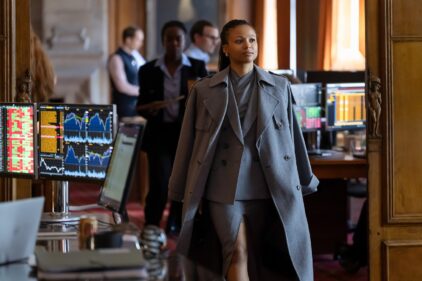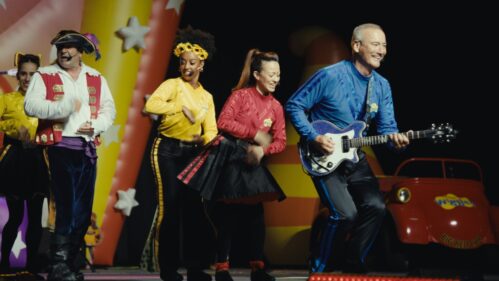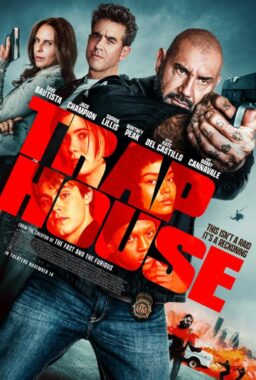Clever, fun, and richly layered, HBO’s “Lovecraft Country” echoes obvious inspirations while also feeling fresh and new. A few pacing speedbumps aside, there’s so much to admire here, from the overall ambition of the project to a pair of performances from obvious future stars at the show’s center. It’s a tightrope-walking act of a show, something that constantly looks like it’s about to fall but always regains its overall balance. Much like “Watchmen,” “Lovecraft Country” is a show that uses genre storytelling to peel back layers of American history to reveal the systemic problems underneath it, but it’s also got a marvelously entertaining side, one that’s gory and sexy in unexpected ways, recalling another HBO smash hit, “True Blood,” and even old adventure serials that dug into history’s mysteries. It’s a joy to watch this show’s influences blend together into creator Misha Green’s vision, which people are going to be talking about for at least the next three months.

Atticus Black (Jonathan Majors) returns from the Jim Crow South to the city he grew up in Chicago after his father Montrose (Michael K. Williams) goes missing. He heads out with his uncle George (Courtney B. Vance) and a friend named Leti (Jurnee Smollett) to find dad, using a cryptic letter Montrose sent as a guide to a mysterious cult in the heartland of America. The narrative takes them into a world of monsters, both literally and those that are technically of the human species. For example, the premiere finds the trio of adventurers in a “sundown county,” an entire county in which non-whites aren’t allowed after the sun goes down. Being chased to the county line by a gun-wielding racist police officer is one thing; the monsters they stumble upon in the woods are another. It’s hard to say which is worse. Each episode of “Lovecraft Country” plays with these dualities—legendary monster storytelling of the H.P. Lovecraft model intertwined with the stories of racist violence that are embedded in this country’s history.
While there’s a continuous narrative, one of the fun things about “Lovecraft Country” is how much Green and her collaborators, including producer Jordan Peele, embrace a playful episodic structure as well. For example, the third episode features Leti moving into a home in a white neighborhood, which just happens to be haunted. Simultaneously, the writers are telling a story that can be enjoyed purely as a standalone episode, one that has repercussions to the overall arc of the story, and comments on segregation and racism in 1950s Chicago. It works on three levels. A later episode involving Leti’s sister Ruby (Wunmi Mosaku) is even more ambitious in the way it balances a stunning story-of-the-week while also pushing the narrative forward. The habit of binge-watching entire seasons and showrunner over-reliance on the cliché that their season should really be seen as a movie that’s been cut up into episodes has led to creators forgetting the joy of episodic storytelling. “Lovecraft Country” has a breathtaking balance, allowing each episode to be analyzed and discussed on its own terms, but also in the context of what the series is doing overall.
From George A. Romero to Jordan Peele, “Lovecraft Country” continues the tradition of socially conscious horror by embedding its messaging in some of the most startling and terrifying imagery on TV this year. Keep in mind—this is H.P. Lovecraft-inspired horror. It’s not “things that go bump in the night” as much as “portals to Hell.” And the show addresses Lovecraft’s deep racism, even quoting some of his worst work in that regard, but then reclaims many of his concepts by subverting them.

If Lovecraft’s vision of cult members and lesser beings destroying the fabric of humanity reflected what he thought of non-white people, “Lovecraft Country” suggests he might have had the right idea but the wrong target. Most of his fiction was about someone discovering that the smiling face of the country held true horrors underneath it. What better writer to use to expose the actual systemic problems in the history of this country? While “Lovecraft Country” pretty quickly gets away from actual Lovecraft stories and creations, the thematic sense remains of a curtain being pulled back on stomach-churning horror—both human and supernatural.
All of the many thematic undercurrents of “Lovecraft Country” aside—and there will be some great pieces written on individual episodes and themes throughout the season, including one here in a couple weeks—there are other reasons to praise this exceptional work. The technical elements are top-notch, as the team of creators find a way to make their show look fantastic but not sterile. It’s both moody and grounded at the same time, a hard trick to pull off. As for performance, being a fan of “The Last Black Man in San Francisco” and “Da 5 Bloods,” I expected to love Jonathan Majors here, and he doesn’t disappoint. However, the revelation is Jurnee Smollett, who gets to play a range of emotion in the first half of the season that most actresses don’t get in an entire series run, and she nails every complex beat. It’s one of the best performances of the year. The whole cast is strong—Williams and Vance are always welcome presences—but the show really does belong to Majors and Smollett. In fact, they’re so good that the show admittedly seems to sag a little bit when they’re off-screen for long periods of time. Luckily, that doesn’t happen often.
There are a few minor growing pains in the first half of the first season of “Lovecraft Country”—a tin line of dialogue here, a thin supporting performance there—but nothing that holds the show back from excellence overall. If it’s not on the absolute top tier of what’s on TV in 2020, it’s not far behind at all, and I suspect the first season of this show is going to be one of the year’s great conversation starters. Let’s make that happen because if we get an even more confident and refined second season of “Lovecraft Country”? That could be a true game-changer.
Five episodes screened for review












